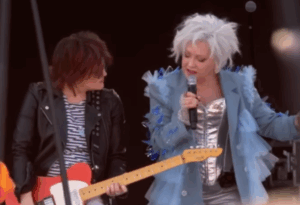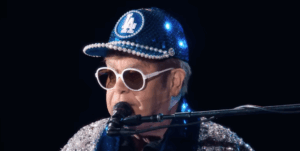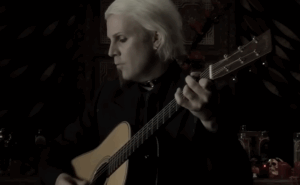The Biggest Scandals in MTV History

via pinballevan / YouTube
When MTV first launched on August 1, 1981, it didn’t just change how people watched music—it changed what music was. For an entire generation, the channel was more than just a source of entertainment; it was a cultural movement. Artists became visual storytellers, fans discovered new genres through flashing neon screens, and music suddenly had a face to match its sound. In an era before YouTube and streaming, MTV became the pulse of youth culture, shaping trends and defining what was “cool.”
But with that kind of cultural power came controversy. Even in its early years—when the network focused almost entirely on music videos—MTV often found itself walking a fine line between innovation and outrage. Whether it was accusations of censorship, shocking on-air moments, or content that pushed the boundaries of what was considered acceptable, the network had a knack for stirring debate as much as it did excitement.
As MTV evolved beyond its original concept and dove headfirst into reality television, the scandals only grew louder. What began as a platform for music discovery became a magnet for chaos, celebrity meltdowns, and cultural flashpoints. Some of these controversies faded with time, but others became unforgettable moments in pop culture history. Here are the biggest scandals that defined—and sometimes nearly derailed—MTV.
Beavis and Butt-Head Blamed for a Tragic Fire
When MTV’s Beavis and Butt-Head first hit the air in the 1990s, it was immediately clear the crude animated duo weren’t meant for kids. Their obsession with destruction and fire became a running gag, especially in the infamous “Comedians” episode. But what began as dark humor turned into a real-world tragedy when a five-year-old boy set his home ablaze, killing his two-year-old sister. The child’s mother blamed the cartoon for inspiring her son to play with fire, sparking outrage and calls for tighter content control.
The show’s creator, Mike Judge, rejected the accusations. In an interview with The Spokesman-Review, he called the incident a “horrible, sad tragedy,” but insisted the show had nothing to do with it. Many shared his skepticism, questioning whether a child’s behavior could be so directly linked to a cartoon he may not have even seen.
Years later, the grown-up boy allegedly confirmed he’d never actually watched Beavis and Butt-Head because his family couldn’t afford cable. Still, his mother maintained her story, claiming the babysitter had let the kids watch it. Regardless of the conflicting accounts, the tragedy forever stained the show’s reputation and made MTV a lightning rod for debates about media influence on young audiences.
Janet Jackson’s Super Bowl Fallout Puts MTV in Hot Water
The 2004 Super Bowl XXXVIII Halftime Show was supposed to be a celebration of pop spectacle. Instead, it became one of the biggest controversies in television history. When Justin Timberlake tore part of Janet Jackson’s costume, briefly exposing her breast on live TV, it set off a national scandal. Though CBS broadcasted the game, MTV had produced the halftime show—and suddenly found itself at the center of a cultural firestorm.
The NFL immediately distanced itself from MTV, with executives calling the performance “inconsistent with assurances” about its content. The backlash was swift and merciless, especially toward Jackson. In a statement, she explained that the “costume reveal” had gone further than planned and that MTV had no prior knowledge. But her admission didn’t save her; the network quietly blacklisted her music and videos, while Timberlake’s career continued largely unscathed.
For years, the incident defined conversations about censorship, race, and gender in entertainment. It wasn’t until 2021, amid renewed discussions in the wake of the #MeToo movement, that Timberlake finally apologized to Jackson. By then, the damage had long been done—both to Jackson’s career and to MTV’s reputation for orchestrating boundary-pushing television that sometimes went too far.
David Bowie Calls Out MTV for Lack of Black Artists
In its early years, MTV prided itself on breaking new ground in music television—but many noticed something missing. The network played almost no videos by Black artists, a glaring omission that critics and musicians alike began calling the “Blackout.” Rick James was especially outspoken about the network’s racial bias, and soon, even fans started to question MTV’s narrow programming choices.
Then came David Bowie’s now-legendary 1983 interview with MTV. Sitting across from a visibly uncomfortable VJ, Bowie calmly but pointedly asked why so few Black artists were featured on the network. The interviewer fumbled through an awkward explanation, citing “regional preferences,” but the exchange made it painfully clear that MTV had a diversity problem it could no longer ignore.
Pressure from artists and executives reached a boiling point when CBS Records president Walter Yetnikoff threatened to pull all CBS videos from MTV unless Michael Jackson’s “Billie Jean” aired. Faced with losing access to major stars, the network relented—and Jackson’s video went into heavy rotation. The result was historic: MTV’s audience exploded, and the door finally opened for generations of Black musicians who would shape pop culture for decades to come.
Kanye West Interrupts Taylor Swift’s Big VMA Moment
The 2009 MTV Video Music Awards were already buzzing with anticipation when Taylor Swift stepped onstage to accept her award for Best Female Video. Moments later, history was made—for all the wrong reasons. Kanye West stormed the stage, snatched the microphone, and declared that Beyoncé had “one of the best videos of all time.” The stunned crowd gasped, and a visibly shaken Swift stood speechless, her big moment hijacked on live television.
For many in the audience, it seemed too outrageous to be real. Some even thought it was a staged stunt until the shock and confusion became undeniable. Reporter Dave Itzkoff later recalled the atmosphere: “There was disbelief and anger in the house, and shock that palpably went through the room.” The clip instantly went viral, becoming one of MTV’s most infamous award show moments.
The fallout lasted for years. Swift and West traded jabs in songs, interviews, and public appearances, while even President Barack Obama weighed in, calling West a “jackass.” The incident would haunt both artists’ careers in different ways—and for MTV, it cemented the VMAs as the ultimate stage for pop culture chaos.
The Disgusting ‘Dude, This Sucks’ Incident
Not every MTV controversy made it to air—but that didn’t make them any less disturbing. Dude, This Sucks, a variety show pilot filmed in 2000, was scrapped before it ever premiered after a shocking on-set stunt sparked a lawsuit. Two 13-year-old girls invited to watch a performance by a group called the Shower Rangers were horrified when the performers exposed themselves and defecated on the audience. What was meant to be comedy quickly turned into a traumatic experience for everyone involved.
At a press conference with attorney Gloria Allred, the girls described being splattered with feces while cameramen conveniently covered their equipment before the act—proof, they claimed, that producers knew what was about to happen. The story made national headlines, turning MTV’s reputation for edgy humor into a symbol of reckless irresponsibility.
MTV executives issued an apology and shelved the footage permanently. “It was a terrible incident,” said programming president Brian Graden, promising safeguards to prevent similar incidents. Still, the damage was done. The scandal became a reminder that MTV’s appetite for shock value could cross moral—and legal—boundaries, leaving a stain that not even its wildest shows could outdo.
Fraternity Life Ends in Chaos and Consequences
Following the success of Sorority Life, MTV decided to capture the same drama from a male perspective with its spin-off Fraternity Life. The idea seemed simple—follow college fraternity brothers through pledging, parties, and pranks—but the execution was anything but. The two-season reality series featured Sigma Chi Omega from the University at Buffalo and Delta Omega Chi from UC Santa Cruz, both local chapters chosen for a reason. As UCSC volleyball coach and Greek life adviser Jay Hosack put it, “MTV only chooses locals because nationals have governing bodies. Locals don’t have anybody to say ‘no.’”
The producers got exactly what they wanted: scandal, recklessness, and bad behavior. In the first season, viewers watched as fraternity members broke into the Buffalo Zoo and performed hazing rituals that led to disciplinary action from the university. The show’s second season went even further off the rails when two Delta Omega Chi members stole a beloved 18-inch koi fish named Goldie from a campus pond, grilled it, and ate it—an act that was caught on MTV’s cameras, though never aired.
What was supposed to be a look into fraternity brotherhood turned into a case study in irresponsibility. Both chapters faced punishment, and the backlash from universities and national Greek organizations was swift. By the end of its second season, Fraternity Life was canceled, leaving behind a trail of bad press and confirming that MTV’s appetite for controversy had once again gone too far.
Andrew Dice Clay’s VMA Routine Gets Him Banned for Life
MTV should’ve known what it was in for when it booked Andrew Dice Clay for the 1989 Video Music Awards. Known for his explicit and often offensive comedy, Clay brought his signature brand of raunchy nursery rhymes to the live broadcast. As he launched into his act before introducing Cher, producers backstage panicked. Host Arsenio Hall reportedly had to physically stop Dick Clark from storming the stage to cut Clay off mid-performance.
The backlash was immediate. MTV executives declared a “lifetime ban” on Clay, marking one of the most infamous moments in the VMAs’ history. “They get all these top dogs of MTV together, and they’re all like, ‘Dice is banned for life,’” Clay later recalled. Ironically, Dick Clark himself reportedly disagreed with the decision, arguing that controversy was part of what made live television electric.
More than two decades later, Clay was finally allowed back to attend the 2011 VMAs—where Lady Gaga performed in her “Jo Calderone” persona, a character many noted bore an uncanny resemblance to Clay’s style. Watching from the audience, he couldn’t help but notice the irony. “It was sort of mind-blowing to me,” he told ABC News. “After all those years banned, here I was watching someone doing what got me banned in the first place.”
MTV’s Spring Break Goes Too Far
For nearly three decades, MTV’s Spring Break was the ultimate party spectacle—thousands of college kids flocking to beaches, bikinis, and booze, all broadcast straight into America’s living rooms. The annual event began in 1986 and quickly became a pop culture institution, even as it drew criticism for its wild and sometimes inappropriate behavior. Each year brought new controversies, from public drunkenness to questionable contests that blurred the line between fun and exploitation.
Local communities that hosted the event often regretted it. Cities complained about property damage, arrests, and unwanted attention, while MTV tried to walk the tightrope between edgy entertainment and outright scandal. One former contestant, Jaime Torres, told the LA Times that MTV insisted on toning things down after a year of backlash. “No thong bikinis were allowed. No grinding, no rump shaking,” she said. “They stressed family, family, over and over again.”
By the mid-2010s, the cultural tide had shifted. MTV officially canceled Spring Break in 2014, but in an attempt to recapture its past glory, the network tried bringing it back in 2019. The move was met with heavy criticism in the post-#MeToo era, with many calling the revival tone-deaf. What was once a carefree youth celebration had become a symbol of MTV’s inability to evolve with the times.
Jersey Shore Sparks Uproar Among Italian Americans
When Jersey Shore premiered in 2009, it was clear MTV had struck gold—and a nerve. Even before the first episode aired, Italian-American groups condemned the show for promoting offensive stereotypes. The cast’s self-described “guidos” and “guidettes” were loud, tan, and unapologetic, but critics saw it as an ugly caricature of an entire ethnic group. “The show is an attack on Italian Americans altogether,” said New Jersey Assemblyman Ralph Caputo. “One would like to think MTV would have higher programming standards than this.”
Local officials along the actual Jersey Shore also voiced concern. They feared that the series would not only misrepresent their communities but attract rowdy fans drawn to the debauchery on screen. “The program depicts the Jersey Shore as a culturally vapid place,” said Daniel Cappello of the Jersey Shore Convention & Visitors Bureau. The backlash was so fierce that several sponsors briefly pulled advertising, hoping to distance themselves from the controversy.
But controversy turned out to be the show’s best marketing tool. Jersey Shore became one of MTV’s highest-rated programs, running for six seasons and turning its cast—especially Snooki and The Situation—into household names. The network doubled down years later with Jersey Shore: Family Vacation, proving that sometimes, bad publicity really is good for business.
https://twitter.com/JerseyShore/status/976866105745649665
Jackass Copycats Lead to Real-Life Tragedies
When Jackass debuted in 2000, MTV had no idea how far its influence would reach—or how dangerous it could be. The show’s mix of outrageous stunts, pranks, and injuries became an instant hit, but it also inspired countless young fans to imitate what they saw. Even before its premiere, MTV executives knew copycats could become a problem. “Most of the stunts are of a caliber that they couldn’t be imitable,” said programming president Brian Graden in 2001. “It’s almost ridiculous in terms of the number of warnings we put on it.”
Despite the disclaimers, tragedy struck. Just eight days after Graden’s interview, a 13-year-old boy was severely burned after trying to recreate a fire stunt from the show. The following year, a 15-year-old died after jumping onto a moving car to mimic a Jackass movie scene. Each time, the network faced public outrage and questions about accountability.
Star Johnny Knoxville repeatedly emphasized that viewers should never try the stunts at home. “My heart goes out to the kid’s family, but we’ve done everything we can to prevent this type of thing from happening,” he told The Knoxville News-Sentinel. But for many parents and critics, those warnings were never enough. The tragedies became a grim reminder that MTV’s brand of reckless entertainment came with very real consequences.














